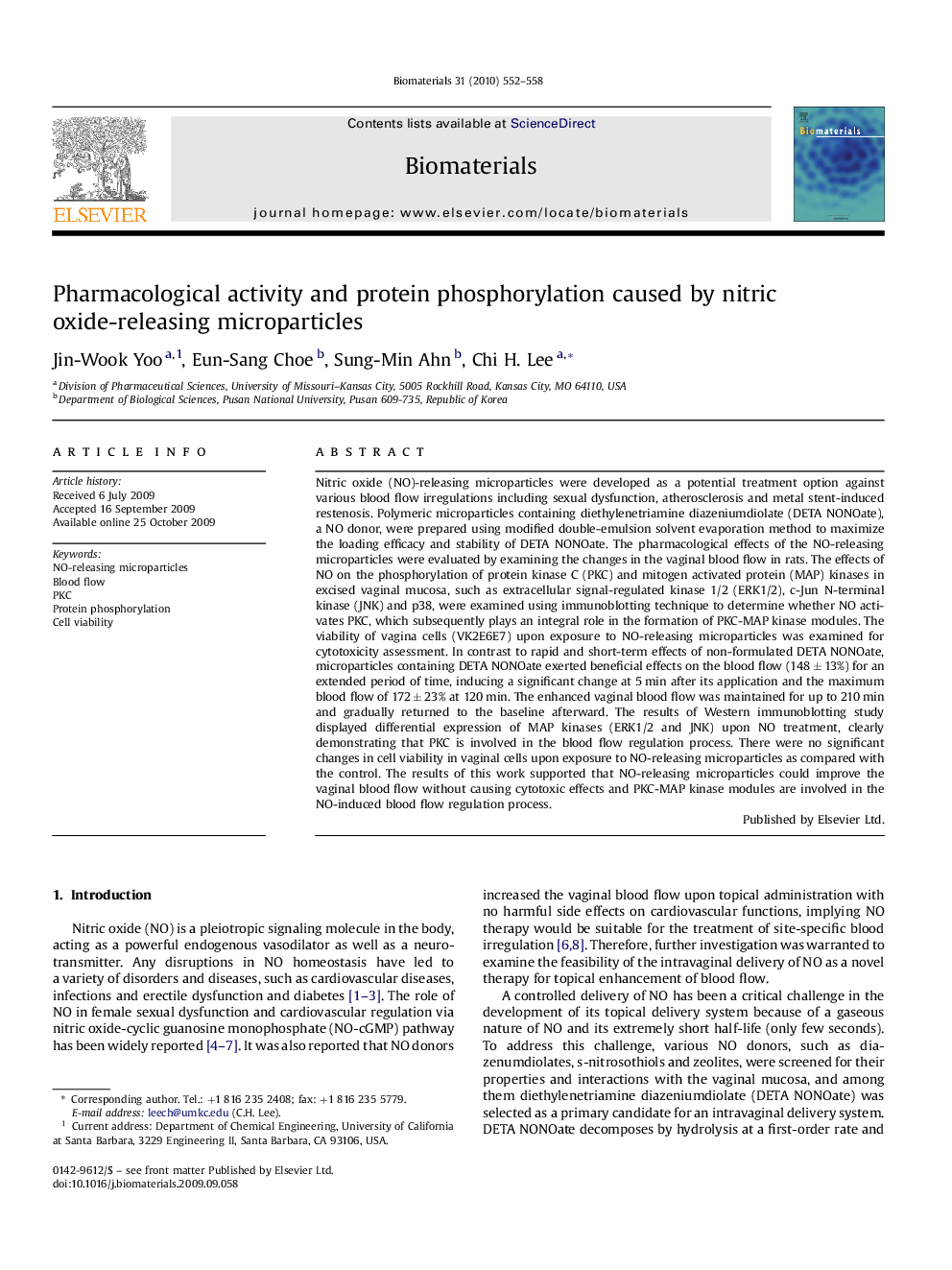| کد مقاله | کد نشریه | سال انتشار | مقاله انگلیسی | نسخه تمام متن |
|---|---|---|---|---|
| 8516 | 595 | 2010 | 7 صفحه PDF | دانلود رایگان |

Nitric oxide (NO)-releasing microparticles were developed as a potential treatment option against various blood flow irregulations including sexual dysfunction, atherosclerosis and metal stent-induced restenosis. Polymeric microparticles containing diethylenetriamine diazeniumdiolate (DETA NONOate), a NO donor, were prepared using modified double-emulsion solvent evaporation method to maximize the loading efficacy and stability of DETA NONOate. The pharmacological effects of the NO-releasing microparticles were evaluated by examining the changes in the vaginal blood flow in rats. The effects of NO on the phosphorylation of protein kinase C (PKC) and mitogen activated protein (MAP) kinases in excised vaginal mucosa, such as extracellular signal-regulated kinase 1/2 (ERK1/2), c-Jun N-terminal kinase (JNK) and p38, were examined using immunoblotting technique to determine whether NO activates PKC, which subsequently plays an integral role in the formation of PKC-MAP kinase modules. The viability of vagina cells (VK2E6E7) upon exposure to NO-releasing microparticles was examined for cytotoxicity assessment. In contrast to rapid and short-term effects of non-formulated DETA NONOate, microparticles containing DETA NONOate exerted beneficial effects on the blood flow (148 ± 13%) for an extended period of time, inducing a significant change at 5 min after its application and the maximum blood flow of 172 ± 23% at 120 min. The enhanced vaginal blood flow was maintained for up to 210 min and gradually returned to the baseline afterward. The results of Western immunoblotting study displayed differential expression of MAP kinases (ERK1/2 and JNK) upon NO treatment, clearly demonstrating that PKC is involved in the blood flow regulation process. There were no significant changes in cell viability in vaginal cells upon exposure to NO-releasing microparticles as compared with the control. The results of this work supported that NO-releasing microparticles could improve the vaginal blood flow without causing cytotoxic effects and PKC-MAP kinase modules are involved in the NO-induced blood flow regulation process.
Journal: Biomaterials - Volume 31, Issue 3, January 2010, Pages 552–558